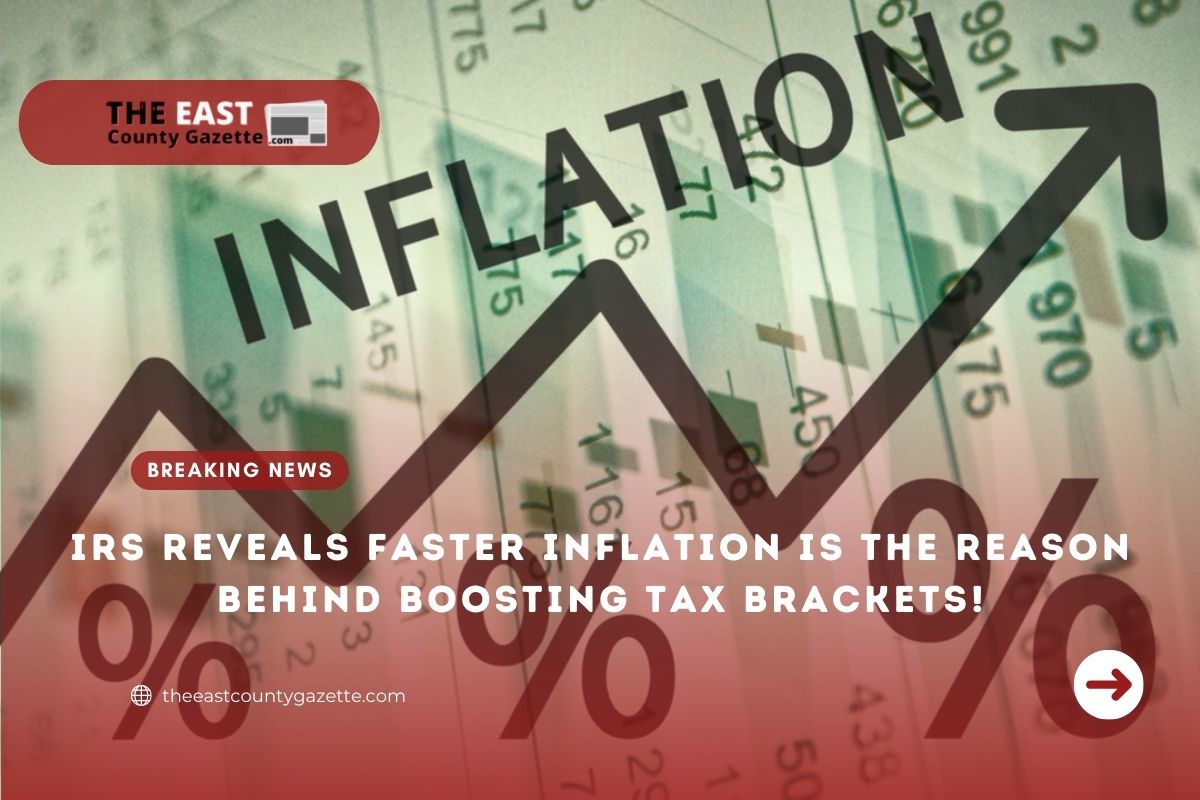IRS Reveals Faster Inflation is the Reason Behind Boosting Tax Brackets!
As a result of the faster pace of inflation, the IRS said that the federal tax bracket thresholds will be higher in 2022.
The top tax bracket will be accessed by a married couple earning about $20,000 more next year, with a 37% tax rate.
In an effort to keep up with rising consumer prices, the IRS adjusts tax brackets each year. This year’s increase is larger than usual.
Tax rates will remain the same as those set by Congress as part of the Tax Cuts and Jobs Act of 2017, which lowered the low threshold to 10% and raised the high threshold to 37%.
Other thresholds are also being adjusted for inflation, including the standard deduction for married couples, going up by 3.2% next year to $25,900.
In spite of that, the increase won’t keep up with inflation, which has been accelerating this year because of supply-chain blockages, labor shortages, including various other factors.
The Bureau of Labor Statistics said Wednesday that consumer prices rose to 6.2% from a year ago in October, faster than their 5.4% rise the month before.
The cost of gasoline, for example, is more expensive, which is cutting into household budgets and reducing purchasing power.
There has been a 3% increase in the income threshold of the new tax brackets.
Below is a list of the new tax bracket thresholds in 2022.
- 10% tax bracket: single individuals earning up to $10,275 and married couples filing jointly earning up to $20,550.
- 12% tax bracket: single filers earning more than $10,275 and married couples filing jointly earning over $20,550.
- 22% tax bracket: single filers earning more than $41,775 and married couples filing jointly earning over $83,550.
- 24% tax bracket: single filers earning more than $89,075 and married couples filing jointly earning over $178,150.
- 32% tax bracket: single filers earning more than $170,050 and married couples filing jointly earning over $340,100.
- 35% tax bracket: single filers earning more than $215,950 and married couples filing jointly earning over $431,900.
- 37% tax bracket: single filers earning more than $539,900 and married couples filing jointly earning over $647,850.
The IRS said the personal exemption will remain at $0, the same as in 2021; the personal exemption was eliminated in the Tax Cuts and Jobs Act.
A new standard deduction will also be added to account for inflation, according to the agency. In the coming tax year, it will increase from $25,900 to $800. According to the IRS, the standard deduction for single taxpayers will increase by $400, or to $12,950.
Read More: Biden Presents His $1 Trillion Infrastructure Plan as a Fix for Rising Inflation!
Other Changes: Higher FSA limit, 401(k) totals
The IRS said some other limits are also going higher for the next tax year.
There will be an increase of $100 from the maximum for 2021, which will allow employees to stash away up to $2,850 for health expenses in their flexible spending accounts.
Since the IRS announced the new limits on November 10, it’s apparent that some companies have already closed their open-enrollment periods for 2022 employee benefits before the IRS announced the new cap, which may mean some workers didn’t get to take advantage of the new limit.
Earlier this month, the IRS announced that workers can put an extra $1,000 into their 401(k)s.
From 2021 onward, 401(k), 403(b), and most 457 plan contributions will increase from $19,500 to $20,500.
Read More: Inflation Sees Biggest Jump in 30 Years, Jumps to 6.2% in October
In contrast, people will still be able to contribute $6000 to IRAs next year.
In 2022, more high-income tax filers may be able to contribute to Roth IRAs, since the IRS said the limit will be higher, between $129,00 and $144,000 for single filers.
In the current tax year, Roth IRAs were phased out between $125,000 and $140,000.
In addition, the income phaseout threshold for married couples and head of household filers will also increase.
As a way for middle-class workers to set aside money for retirement, the Roth IRA was invented more than two decades ago.
Those who use it can save money after-tax, let it grow tax-free, and subsequently withdraw tax-free after retirement.
Those who expect to be in a higher tax bracket when they retire can take advantage of that.

